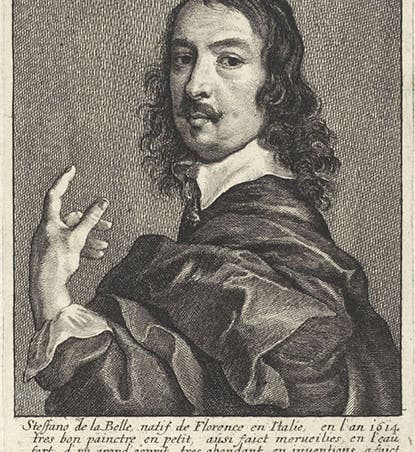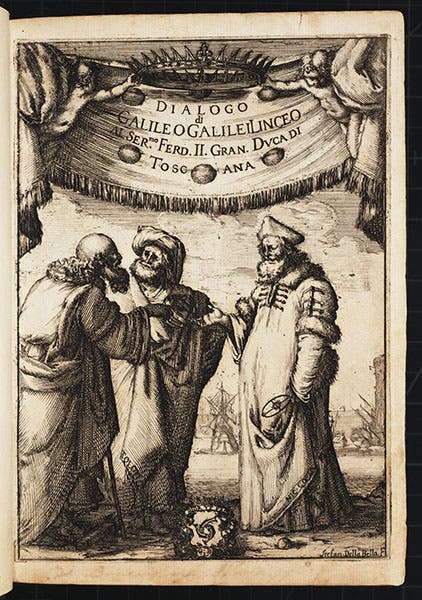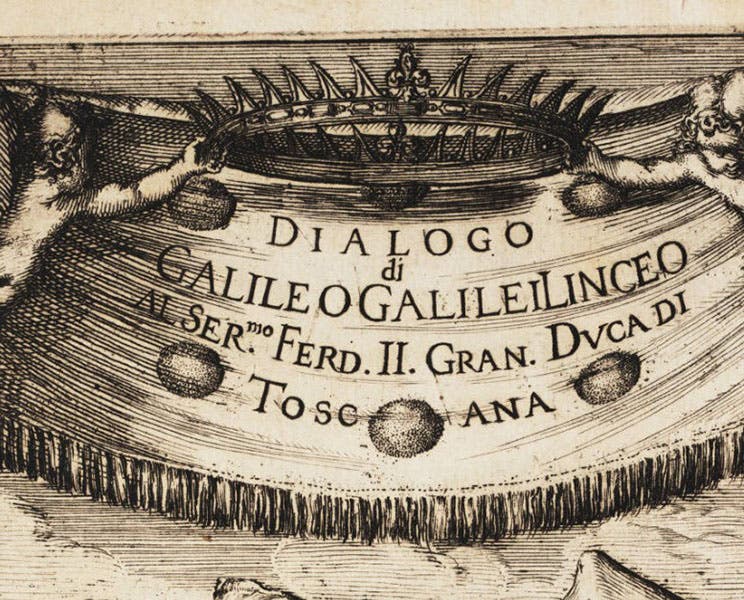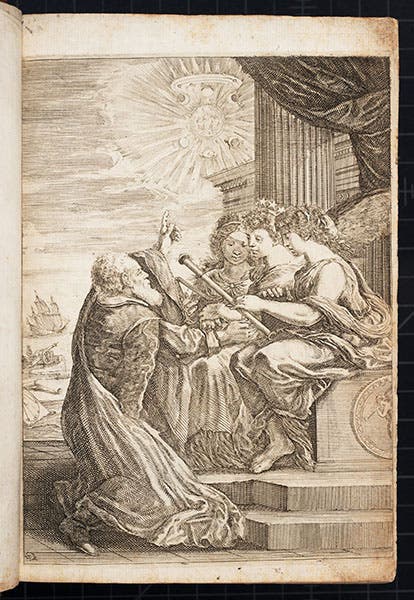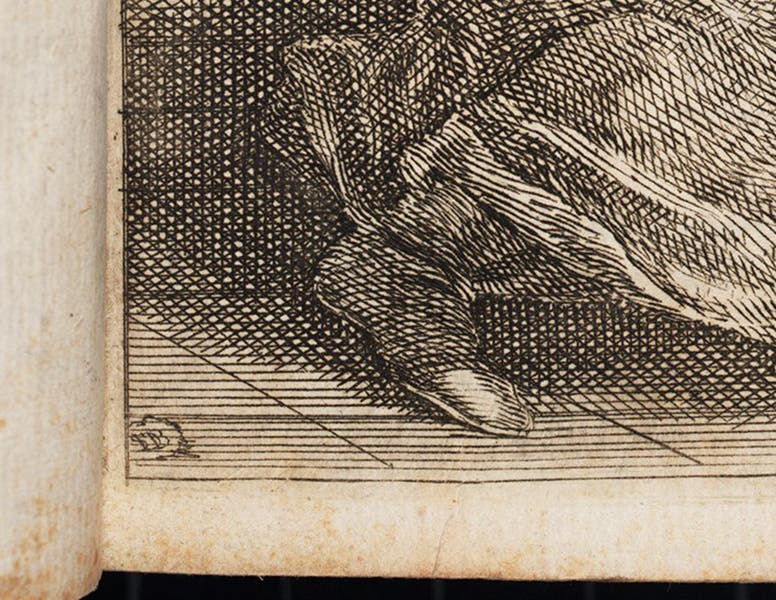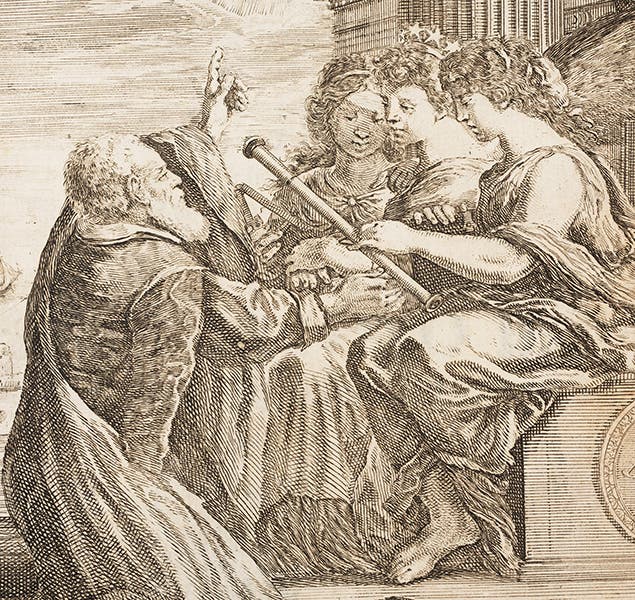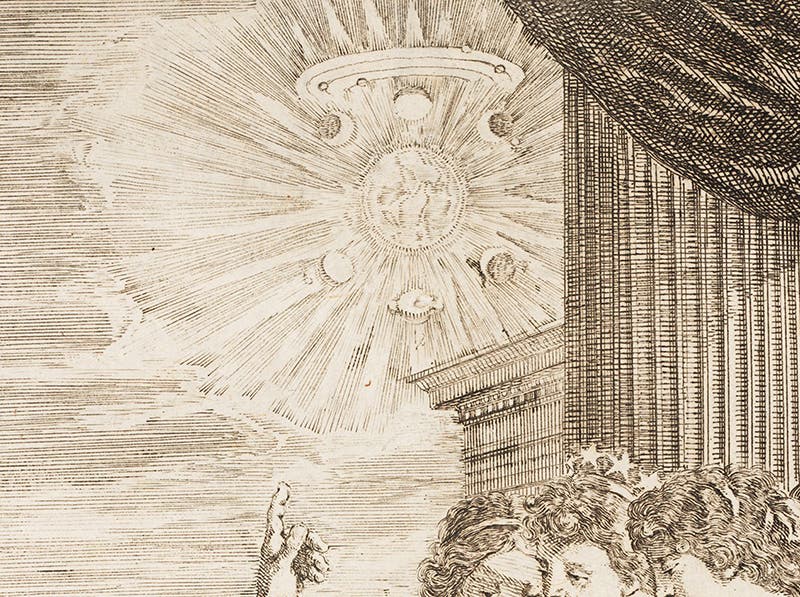Scientist of the Day - Stefano della Bella
Stefano della Bella, an Italian artist and engraver, was born May 18, 1610. Della Bella designed and etched the frontispiece to Galileo's Dialogue on the Two Chief World Systems (1632), which is one of the best-known images in the history of science, as it shows the two ancient proponents of an Earth-based world system, Aristotle and Ptolemy, in imaginary dialogue with Copernicus, proponent of a Sun-centered world system. We will not discuss its general features today, since we did so six years ago, when we first celebrated the birthday of della Bella. But we will show the 1632 frontispiece again (second image, below).
And because one feature of the 1632 frontispiece escaped our attention the first time around, and will be useful for today’s narrative, we will point it out here. The top of della Bella’s etching depicts the crest of the Medici family, the patrons of Galileo in Florence (see detail, third image, just below). It consists of 6 small globes in a circle, surmounted by a crown, representing Medici sovereignty over the duchy of Tuscany.
Galileo died in 1642, and even though his Dialogue had been banned and placed on the Index, he left behind many other writings, which were gathered together and published as his Opere in 1655-56. This work also has a frontispiece (fourth image, just below), and it too was designed and etched by della Bella, as we see from his “SDB” mark at the bottom (fifth image, below).
It is a simple-enough composition. Galileo is the central figure, and he is presenting his telescope to three figures who would appear to be muses and are quite interested in the instrument, not noticing that Galileo is pointing to something in the heavens (see detail, sixth image, just above). Were they to look, they would see what looks very much like a solar system! There appears to be a large central Sun, and the six objects around it appear to be six planets (see detail, seventh image, below). The one at the two-o’clock position would appear to be Earth, with its smaller moon; Saturn, with its “anses” or handles is at the bottom, and Jupiter, at the top center, is circled by four moons, which Galileo discovered.
But the Copernican system was still under interdict in Italy! How did della Bella get away with depicting the heliocentric system on a published frontispiece? A clever man, della Bella left himself a ready explanation if he were asked (and we don’t know that he was). If challenged, he could say: “You may see the Copernican system. But I have drawn the Medici crest!” And indeed, as we notice the crown-like rays streaming up from Jupiter, and the neat circular arrangement of the 6 globes, it would be hard to deny his claim. That is one of the wonderful features of 17th-century emblematic titlepages – they nearly always have more than one message, and you are free to choose the one that suits you. Or, in this case, the one that protects you.
Della Bella lived for eight more productive years after Galileo’s Opere was published, but for sheet ingenuity, he never surpassed the cleverness of his 1656 frontispiece.
Dr. William B. Ashworth, Jr., Consultant for the History of Science, Linda Hall Library and Associate Professor emeritus, Department of History, University of Missouri-Kansas City. Comments or corrections are welcome; please direct to ashworthw@umkc.edu.

